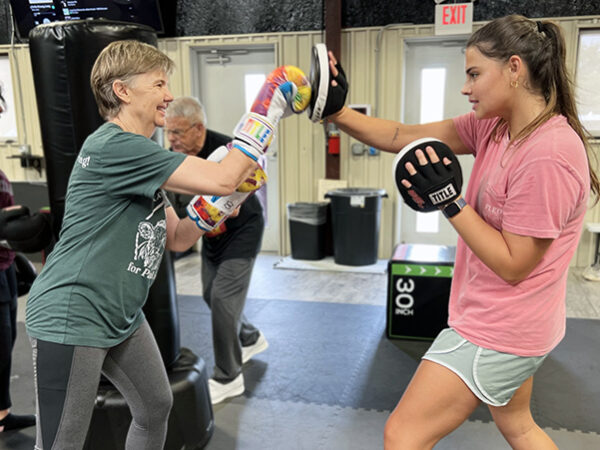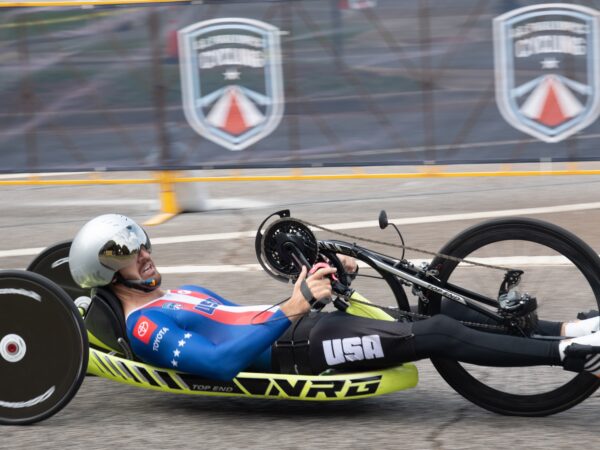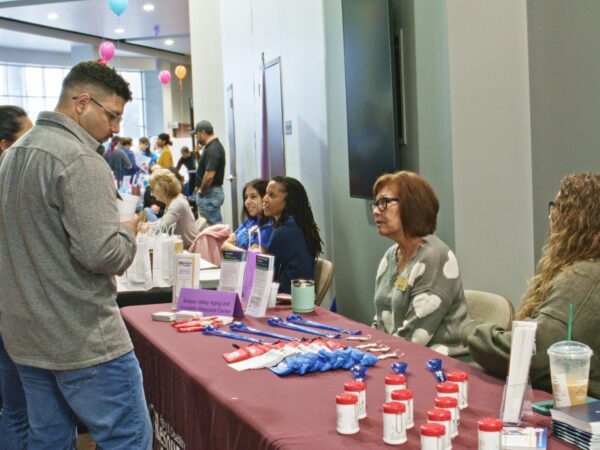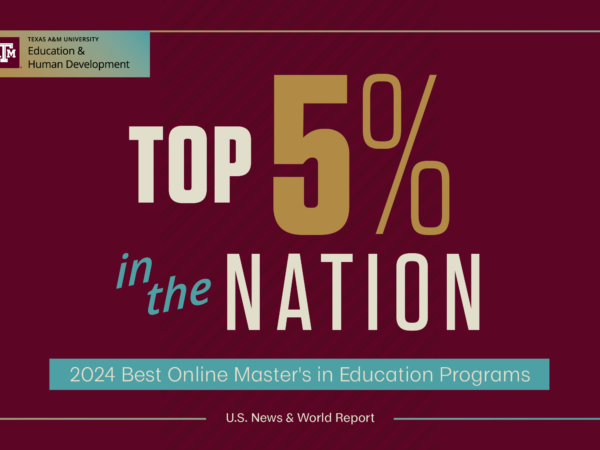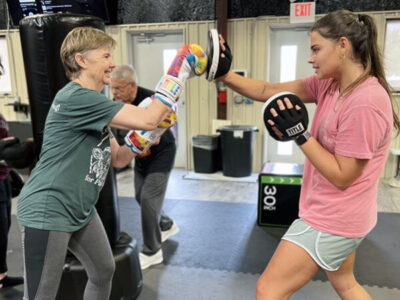What Is Design Thinking?
With a focus on design thinking, Dr. Richard Kimbell, Emeritus Professor at Goldsmiths University of London, is presenting a series of lectures and workshops at Texas A&M.
Kimbell’s main interest is in design learning and how teachers can assess the design-related projects.
Dr. Michael de Miranda, department head in the Department of Teaching, Learning and Culture, also has a passion for design thinking and how it can shape learning in the classroom. We spoke with him ahead of Kimbell’s visit.
Q: What is design thinking?
de Miranda: Design thinking, particularly in the context of developing STEM thinking skills, is an integrative cognitive process in which we work towards more complex thinking with students.
Q: What is an example of design thinking?
de Miranda: Let’s say we have a problem where water is eroding part of the environment. A question might be, ‘how fast is the water coming and what is the quantity of the water coming?’ There are ways we can calculate this – the velocity of the water, the volume of the water. The student begins to draw on their understanding of natural resources – erosion, geology, the soil, weather patterns, etc.
Q: Why is design thinking important?
de Miranda: One of the critical components in education is that we have a paradox in which students tend to learn subjects in silos. But, the world isn’t like that. When a student enters a career field, they don’t come into an environment and say ‘now it’s time to put on my math hat.’
It’s important to instill these design habits across mathematically-rich environments, scientific-rich environments, technologically-rich environments and engineering environments. The students will be much greater thinkers, much better problem solvers and much better team players.
Q: What can teachers do to target design thinking in the classroom?
de Miranda: We have evidence-based, specific pedagogical practices for that. One way is to help teachers learn how to create what we call design briefs. They’re like curriculum and lesson planning, but they’re well-designed to achieve the kinds of immersive design environments for students. One of the things we teach our teachers to do is to create a long-term design problem in which it takes longer than a day to solve and it takes more than one student.
As a teacher is teaching their subjects, students are working on a design problem that requires them to use math, science, writing, research skills, reading and reporting all together. The students work together on the design problem with a goal of presenting a prototype at the end of the semester.
There is a written report that satisfies the English Language Arts strengthening. There is a scientific and engineering poster showing outcomes of why they think their solution will work. They have to show the math behind it and the data they have collected. It’s a long-term design problem.
Q: What are you hoping Dr. Kimbell’s visit to Texas A&M accomplishes?
de Miranda: I hope that he is able to bring to the forefront the importance of instilling design thinking and student connoisseurship – the thirst to be connoisseurs of learning, connoisseurs of challenges. He has three goals during his visit. One is to begin to plant the seeds on the importance of what he calls designerly thinking for a more creative STEM workforce. Number two, he’ll be coming here to talk about structuring tasks for student connoisseurship. The third one is – how do we assess these projects properly?
I hope that Dr. Kimbell will start to stimulate this conversation so that we might think about evolving to a more authentic instructional design environment across subjects. It’s important to begin to educate students in a more authentic driven way. It drills down to students often asking, ‘when are we ever going to use this?’ Well, guess what – we’re going to use this now.”
To register for Kimbell’s workshops, visit the links below:
LECTURE 1: DESIGN THINKING & PORTFOLIOS
Time: 2/4/19 11a-12p
Location: Langford Bldg., Room 212
Registration link: tx.ag/designrsvp1
Time: 2/4/19 2:30p-3:30p
Location: HECC 103
Registration link: tx.ag/designrsvp2
LECTURE 2: STRUCTURING ENGINEERING TASKS FOR ENHANCED LEARNING
Time: 2/1/19 10a-12p
Location: Zachry 212
Registration link: tx.ag/engrrsvp
LECTURE 3: ASSESSING LEARNERS’ PERFORMANCE IN DESIGN, ENGINEERING & TECHNOLOGY
Time: 2/6/19 3p-4p
Location: Zachry 297/298
Registration link: tx.ag/perfrsvp
LECTURE 4: ASSESSMENT AS A POSITIVE LEARNING PROCESS
Time: 2/11/19 4p-5p
Location: EDCT 225
Registration link: tx.ag/positiversvp
WORKSHOP 1: DESIGN THINKING IN ACTION
Time: 2/7/19 3p-5p
Location: EDCT 301
Registration link: tx.ag/actionrsvp
Time: 2/8/19 10a-12p
Location: Zachry 212
Registration link: tx.ag/actionrsvp2
WORKSHOP 2: PERFORMANCE ASSESSMENT
Time: 2/7/19 10a-12p
Location: Langford Bldg. A, Room 212
Registration link: tx.ag/assessrsvp
Time: 2/8/19 1:30p-3:30p
Location: EDCT 616
Registration link: tx.ag/assessrsvp2
About the Writer
Ashley is the Media Relations Coordinator and responsible for news coverage in the Department of Teaching, Learning and Culture as well as the Department of Educational Psychology.
Articles by AshleyFor media inquiries, contact Ashley Green.
Fundraising
To learn more about how you can assist in fundraising, contact Amy Hurley, Director of Development ahurley@txamfoundation.com or 979-847-9455



